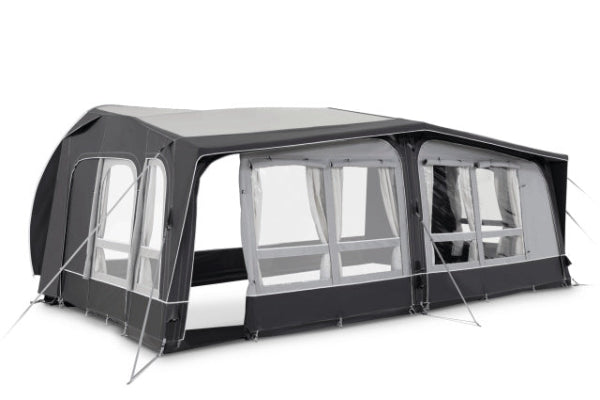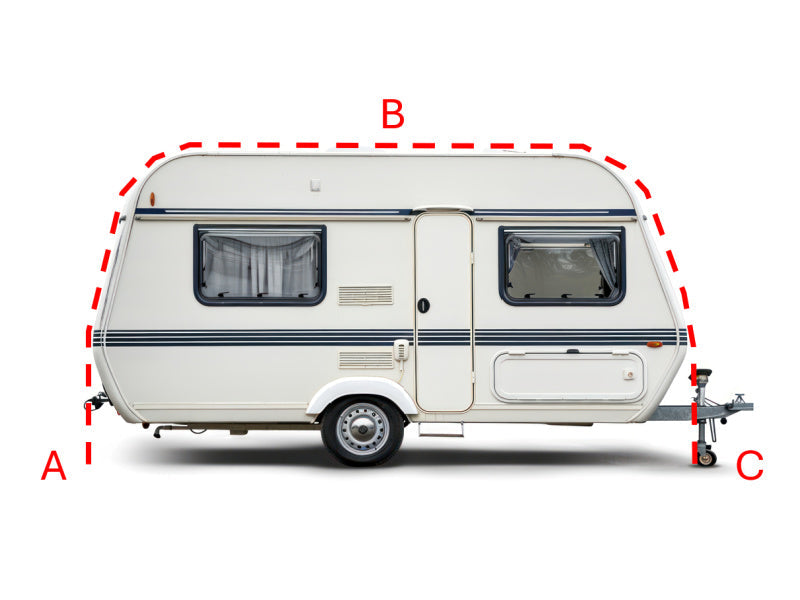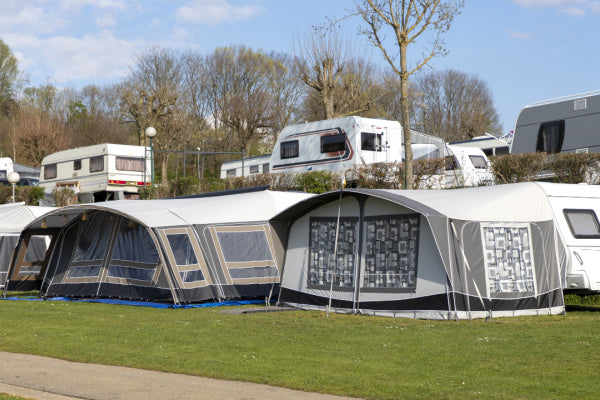EcoFlow vs Anker Power Stations: Which to Choose?
Camping trip? Power outage? Or just sick of fighting over outlets at home? When it comes to portable power stations, EcoFlow wins for speed and innovation, while Anker nails reliability and service. Want the right power buddy for your next adventure (or blackout)? Keep reading—we’ve plugged in the details.
Introduction to Smart Portable Power
The Evolving Portable Power Market
Portable power stations are becoming increasingly popular as more people look for reliable, eco-conscious energy solutions they can use on the move. These compact units offer electricity in a pinch, without the noise or fumes of traditional generators.
Whether you’re a weekend camper or someone preparing for unpredictable power cuts, smart power stations are becoming a must-have.
They offer flexible charging options and sustainable performance, ideal for modern living.

Why are portable power stations gaining popularity for camping, emergencies, and daily tech charging?
From remote work setups to weekend hikes and blackouts, portable stations are meeting the growing need for mobile energy. They act like oversized battery banks with AC, DC, and USB outputs to keep your gadgets running.
With cleaner power and silent operation, they're a hit for camping, travel, and indoor use. The UK’s unpredictable weather and rising energy concerns have only added to their appeal.
Plus, they remove the need to scramble for wall sockets during an outage.
EcoFlow and Anker: A New Era of Portability
Brand focus: EcoFlow's rapid expansion vs. Anker's established reputation in smaller electronics
EcoFlow is a newer company that’s quickly gained traction with its sleek, fast-charging power stations and strong sustainability push. Their units look futuristic and recharge at speeds that feel almost unfair.
In contrast, Anker has long been a household name in portable electronics. Their expansion into power stations came naturally, building on a reputation for quality charging gear.
UK consumers tend to see EcoFlow as the tech-forward newcomer, while Anker is the safe, well-supported choice.
Feature Comparison: Unpacking the Differences
Battery Chemistry and Cycle Life
Focus on LiFePO4 battery adoption for both brands in their newer lines
Both EcoFlow and Anker now offer LiFePO4 battery chemistry in their latest models. This type of battery is safer and more stable than traditional lithium-ion options.
It's especially useful for people who want long-term reliability and can handle thousands of cycles without major degradation.
Comparing advertised cycle life and expected battery health
The brands advertise over 3,000 full charge cycles on these LiFePO4 models. For most users, that means several years of daily use before significant drop-off.
It’s a solid option if you want a power station that lasts beyond the occasional camping trip.
Power Output and Capacity (Wh & W)
Range of models and capacities, typically in the smaller to mid-range for Anker (e.g., River vs. Solix lines)
EcoFlow offers a wider range of models—from the ultra-portable River 2 to the massive Delta Pro. Anker's PowerHouse series is generally more focused, with flagship models like the 555 and 767 covering mid-range and heavy-duty needs.
This makes Anker slightly more limited in size options, while EcoFlow caters to a wider variety of power demands.
Continuous Watt (W) and surge capabilities
The EcoFlow Delta Pro can handle up to 3600W continuously, while the Anker PowerHouse 767 offers 2400W. Both are capable of managing power-hungry tools and appliances.
Most models also handle surge power well, which is important for starting devices like fridges or kettles.

Practical application: how many Watt-hours (Wh) for common devices?
A 1000Wh station can typically:
-
Charge a phone up to 100 times.
-
Run a laptop for 15+ hours.
-
Keep a small fridge running for about 12–15 hours.
Understanding your daily energy needs can help you choose the right size.
Charging Speed and Efficiency
AC Wall Charging: EcoFlow's X-Stream vs. Anker's fast charging technologies
EcoFlow’s X-Stream charging is impressively fast—bringing some models to 80% in just 45 minutes. Anker’s InfiniPower tech is no slouch either but often takes a bit longer.
Quick recharge times are essential when you’re in a hurry or on limited solar time.
Solar charging input and efficiency with compatible solar panels
Solar input varies - EcoFlow offers 400–800W across models, while Anker’s 767 allows up to 1,000W with dual panel input. For smaller models, EcoFlow generally leads.
Both brands use MPPT (Maximum Power Point Tracking) to improve solar efficiency, which is especially handy in cloudy UK conditions.
Car charging and USB-C PD charging
Car charging is supported across both ecosystems. USB-C PD input is also available on newer models—helpful if you're topping up from a laptop charger or other mobile device on the go.
Design, Portability, and User Experience
Weight and size for ultimate portability for outdoor adventures and travel
EcoFlow’s River series is lightweight and travel-ready, while even their bigger models maintain a compact design. Anker’s builds are slightly heavier but feel rugged and durable.
Both are manageable for most users, though serious portability favours EcoFlow.
Build quality, aesthetics, and handling
EcoFlow opts for a futuristic, minimal design. Anker leans more industrial, with tougher exteriors and visible hardware.
Handles are thoughtfully placed on both, making transport straightforward.
Display interfaces and ease of use
Displays on both brands show battery percentage, time remaining, and input/output levels. EcoFlow’s displays are slightly more detailed, while Anker keeps things clean and readable.
Neither requires a learning curve to operate.
Smart Features and Connectivity
Mobile App control: comparing the depth and functionality of EcoFlow's vs. Anker's apps
EcoFlow’s app is rich with settings and monitoring tools. You can remotely change output modes, update firmware, and check battery health.
Anker’s app offers basic controls and stats, which may be enough for casual users.
Other smart features (e.g., light, UPS function on smaller models)
Some models include extras like built-in lights or uninterruptible power supply (UPS) functions. These are useful in blackout-prone areas or when you want seamless device usage.
EcoFlow tends to offer more of these extras, but both brands are gradually adding smart perks.
Output Ports and Connectivity Options
Number and type of AC, DC, USB-A, and USB-C ports
EcoFlow typically offers more port variety—especially USB-C and DC outputs. Anker models include the essentials but fewer total ports on average.
If you have lots of devices, EcoFlow’s layout may be more convenient.
Best Use Cases
Ideal for Personal Use and Small Devices
Which is better for charging phones, laptops, and cameras?
For phones and laptops, both brands perform well. EcoFlow’s River 2 or Anker’s PowerHouse 535 are solid everyday choices. If you just need to power smaller tech, either brand will work reliably.
Top Pick for Weekend Camping and Outdoor Trips
Balancing power and convenience for light outdoor needs
EcoFlow’s quick recharge time and lighter build give it an edge here. Anker, however, offers tough build quality ideal for rougher outdoor conditions.
The EcoFlow River Pro and Anker 555 are both excellent mid-range options.
Emergency Preparedness for Essentials
Running basic electronics during a power outage
During UK power cuts, the EcoFlow Delta or Anker 767 can handle essential devices like routers, lamps, and small kitchen appliances.
They’re a quiet and emission-free alternative to petrol generators.

Brand Reputation and Support
Pricing and Value Proposition
Comparative analysis of cost-effectiveness
EcoFlow's entry-level units are very competitively priced. Anker's high-end models may cost more upfront but often come with better long-term reliability and support.
| Model | Capacity | Price (GBP) |
|---|---|---|
| EcoFlow River | 288Wh | £199 |
| EcoFlow Delta | 1260Wh | £999 |
| Anker PowerHouse 555 | 1024Wh | £799 |
| Anker PowerHouse 767 | 2048Wh | £1,499 |
Warranty and Customer Support
Assessing each brand's customer service and warranty policies
Anker consistently earns high marks for responsive service and generous warranty terms. EcoFlow also offers good support, with a growing UK service network and solid coverage across models.
Conclusion: Your Companion for Power on the Go
Deciding Between EcoFlow and Anker
Key factors for your choice: budget, size, features, and primary use
-
Go for EcoFlow if you prioritise fast charging, lighter weight, and more solar capacity.
-
Choose Anker if you want great build quality, dependable service, and longevity.
It really comes down to what matters most: speed and tech, or rugged reliability.
Future of Portable Power for Everyday Users
As the UK shifts towards remote work, off-grid travel, and climate resilience, portable power stations are becoming household staples. With smarter features, longer lifespans, and cleaner energy, brands like EcoFlow and Anker are paving the way for power—anywhere, anytime.
Other content you might like:
- EcoFlow vs Jackery
- EcoFlow vs Jackery vs Bluetti
- EcoFlow vs Bluetti
- EcoFlow vs AllPowers
- EcoFlow vs Bluetti vs Anker
- EcoFlow vs Victron
- EcoFlow Delta Pro vs Delta Pro 3
- EcoFlow Delta Pro vs Delta 2 Max
- EcoFlow Delta Pro vs Bluetti AC300
- EcoFlow Delta Pro 3 vs Anker Solix F3800
- EcoFlow Delta Pro 3 vs Ultra
- EcoFlow Delta Pro vs Jackery 2000 Plus
- EcoFlow Delta Pro vs Max





Leave a comment